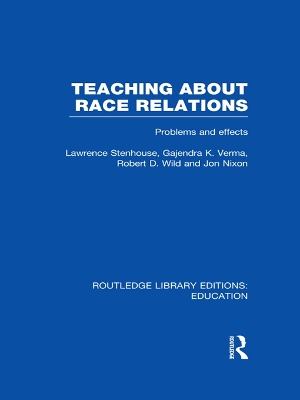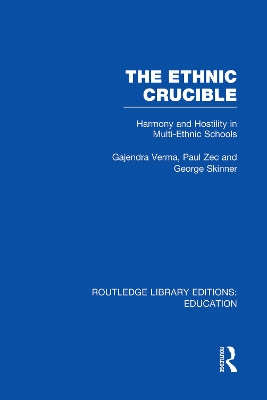Routledge Library Editions: Education
3 total works
Teaching About Race Relations (RLE Edu J)
by Lawrence Stenhouse, Gajendra Verma, Robert Wild, and Jon Nixon
This is the report of two linked research projects: the SSRC Project on Problems and Effects of Teaching about Race Relations, and the Calouste Gulbenkian Foundation Project on Teaching About Race Relations through Drama. Its aim is to help teachers who will face race as a theme, whether it arises in the normal course of their subject teaching or is introduced as a separate topic.
The project worked with three groups of teachers, each of which adopted a different approach, and the results of the testing programme are given alongside a series of case studies of classroom teaching. The book includes a summary of the findings of the research, express as hypotheses and an account of the teacher-dissemination of the project’s work; it concludes with reflections by the director of the project and a participant teacher.
The Ethnic Crucible (RLE Edu J)
by Gajendra Verma, Paul Zec, and George Skinner
Many schools in developed countries have children and adolescents from a variety of ethnic, linguistic, religious and cultural backgrounds. They relate to each other in various degrees of encounter that range from harmony to hostility. The issue of how a school can foster inter-ethnic relationships and challenge the manifestations of bad relationships cannot of course be divorced from tensions and inequalities in the wider society. This book focuses on ways in which schools might make a difference to the quality of such relationships within their walls. It has sought to do this by studying nine secondary schools in some depth: their organisation, structures and interactive processes: and the experiences, attitudes and behaviour of students and their teachers. The research on which the book is based has also yielded data on the influence of policy and procedure in schools on relationships.
Race Relations and Cultural Differences
by Gajendra Verma and Christopher Bagley
A collection of key papers given at three international conferences in Britain, the United States and Canada on race relations and multiculturalism are drawn together in this book. The first section includes three papers on the state of theory in race relations; the second contains papers on educational themes, examining in particular the pitfalls in multicultural education. It also looks at the development and problems of second language education for minority groups in several countries. The final section focuses on special topics including the adjustment and identity of children of mixed race marriages; the plight of children from Canada’s native communities; and the hearing impaired as a minority group.


